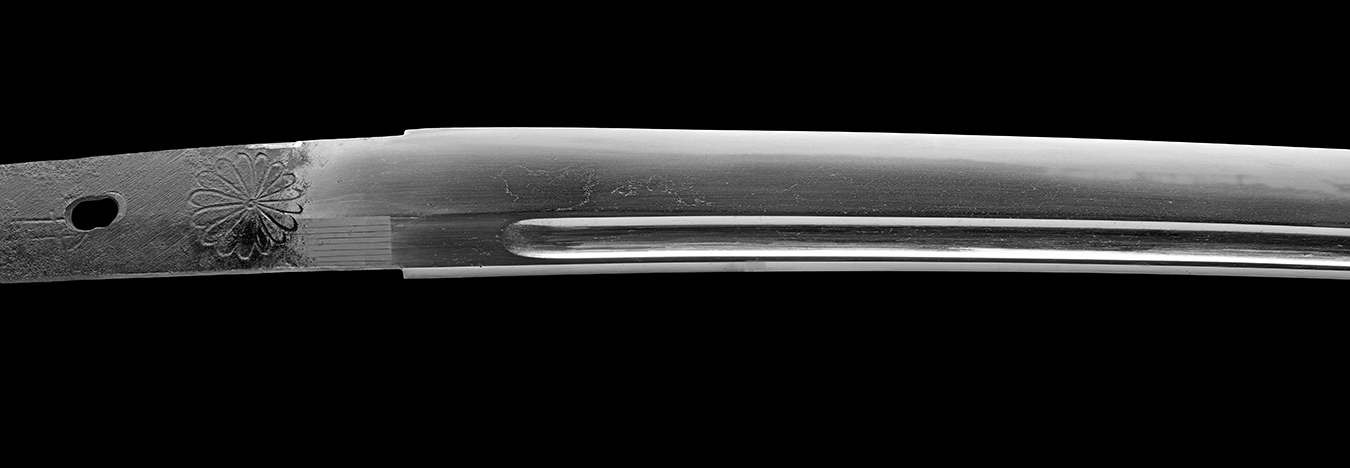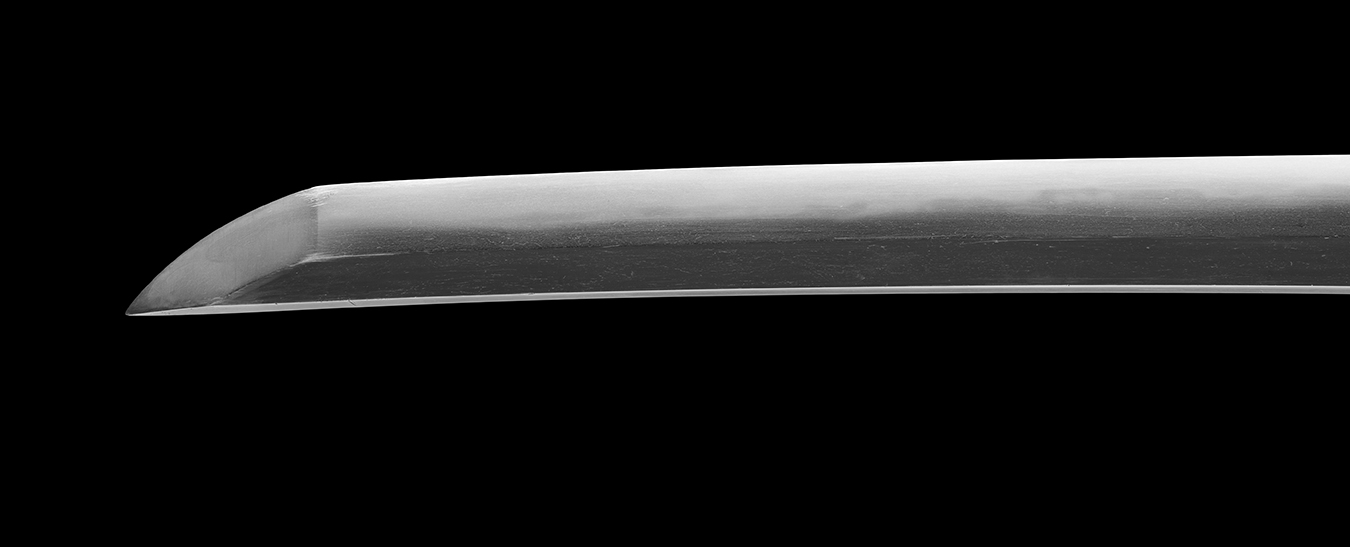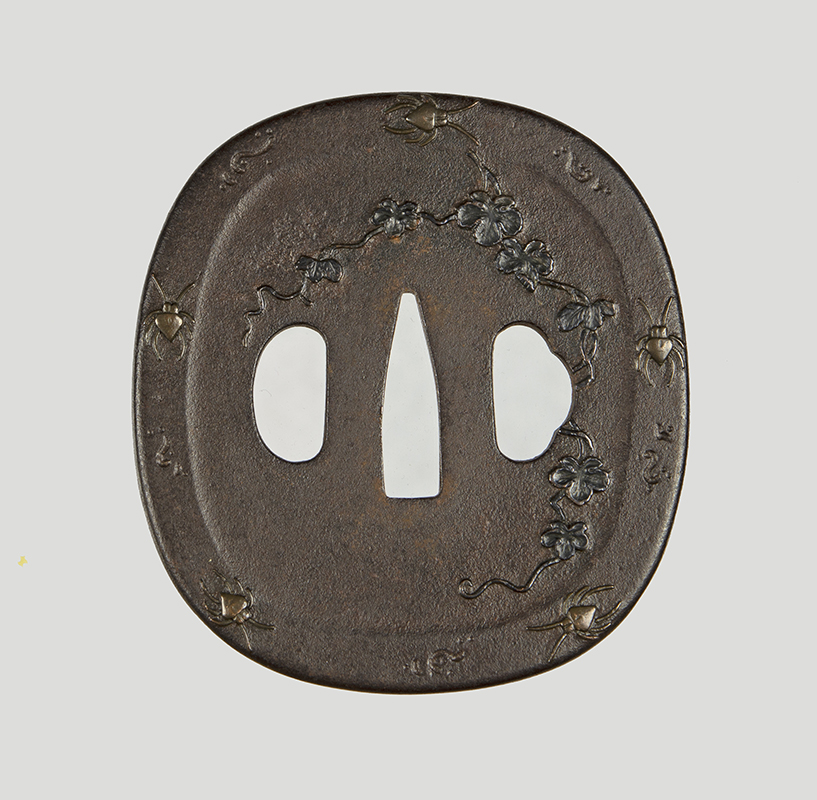|
| |||||||||||||||||||||||||||||||||||||||||||
Hamon : Nie deki sudare-ba with a sugu-yakidashi. There are nijuba and sunagashi mixed in. The nioi guchi is vibrant and bright.
Boshi : : Midare-komi with a pointed return.
Kitae : Mokume mixed with itame. There is ji-nie and the jigane pattern is very clear.
About this sword : An exciting Tokubetsu Hozon shinto katana by the 5th gen Tanba no Kami Yoshimichi. This maker was of the main-line Mishina school and worked in Kyoto. His given name was Mishina Toshichiro. He was active around Shotoku (1711-1716)and there are dated works spanning to the Genbun era (1736-1741). He received his honorary title of "Tanba no Kami" in 1711. This katana has a precious ura mei recording its date of manufacture in the 3rd year of Kyoho, 1718. A mature work from the time after he received his title. This katana features the classic representative hamon for this school, sudareba. Meaning- "bamboo blind ha." The sudareba of this katana is based on shallow notare. The pattern seen inside the hamon looks like a bamboo blind. It was originated by the shodai Tanba no Kami Yoshimichi and passed on through generations. It is unique to this school and its off shoots. A 16 petal Imperial kiku mon is engraved on the nakago of this sword. This is often a trade mark of the Mishina school. The style of the mon can often be used to pinpoint a specific smith and this is a point of appreciation.
This sword is in old polish. The polish is in good condition with a few minor scratches as shown in the photos. There are no kizu in the sword and the workmanship of the jigane and hamon is impressive. The horimono ads refinement to work and is finely executed. It should be noted, there are a few kiri-komi along the edge of the mune. These sword cuts are a badge of honor and testify to the durability / strength of this sword. See photos.
This katana is accompanied by its Edo period koshirae. This koshirae has a NBTHK Hozon paper. This is a higo style monting as evidenced by the fuchi kashira and kojiri. There are iron with gold nunome and look to be later Nishigaki work. The menuki are kinko of crawling dragons. The tsuba is a finely made, iron and in the motif of suemon zogan inscets and vines. This looks like late Edo work from the Tokyo area. The tsuka ito is good order with a matching sageo. There is a crude tsunagi ( wooden blade) for the mounts. A signed and dated Mishna katana with sudareaba hamon, NBTHK Tokubetsu Hozon paper for the blade and NBTHK Hozon paper for the koshirae. The stand shown below is included. A great opportunity in all regards.
SOLD
nihontocraft@bellsouth.net




















